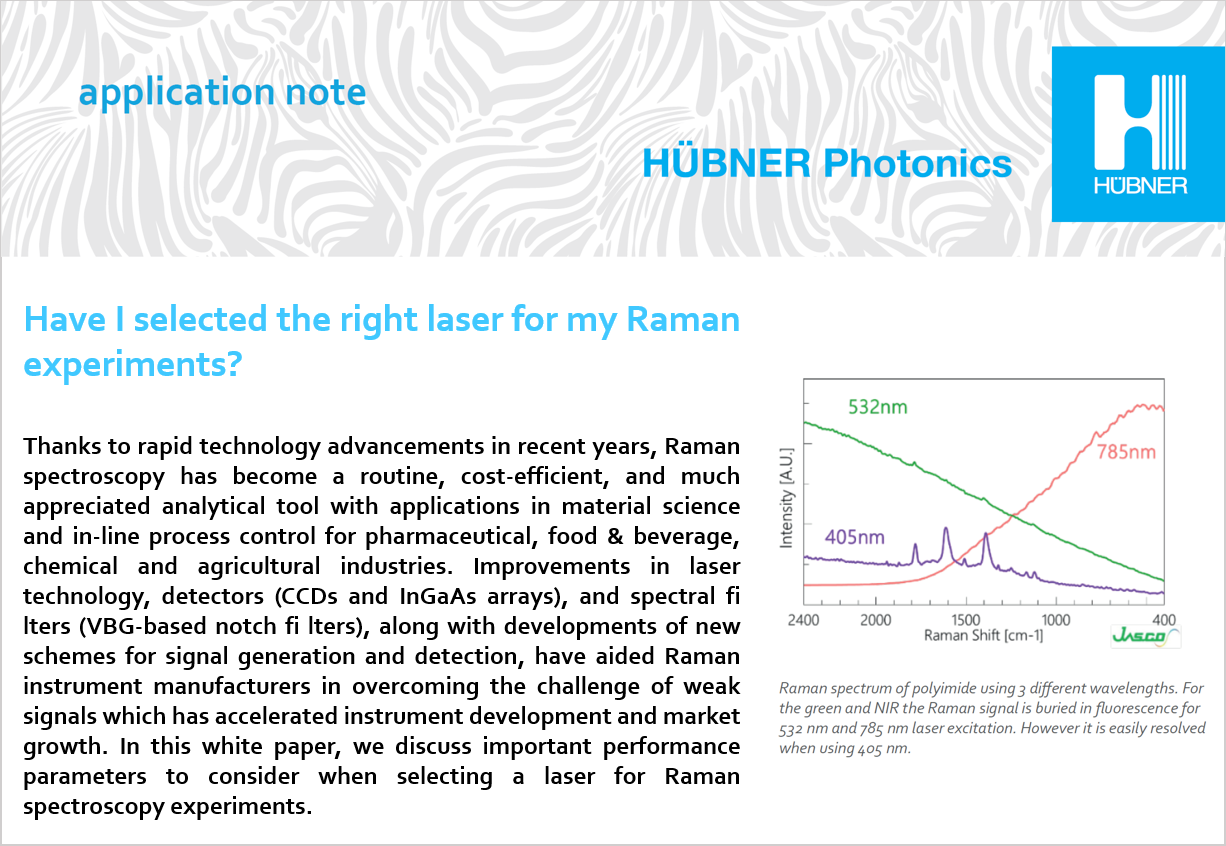|
|
|
|
|
|
|
How to select the right laser for my Raman experiments?

Thanks to rapid technology advancements in recent years, Raman spectroscopy has become a routine, cost-efficient, and much appreciated analytical tool with applications in material science and in-line process control for pharmaceutical, food & beverage, chemical and agricultural industries. Improvements in laser technology, detectors (CCDs and InGaAs arrays), and spectral filters (VBG-based notch filters), along with developments of new schemes for signal generation and detection, have aided Raman instrument manufacturers in overcoming the challenge of weak signals which has accelerated instrument development and market growth.
In this white paper, we outline the important performance parameters to consider when selecting a laser for Raman spectroscopy and discuss the different laser technologies available to meet these requirements.
Thanks to rapid technology advancements in recent years, Raman spectroscopy has become a routine, cost-efficient, and much appreciated analytical tool with applications in material science and in-line process control for pharmaceutical, food & beverage, chemical and agricultural industries. Improvements in laser technology, detectors (CCDs and InGaAs arrays), and spectral filters (VBG-based notch filters), along with developments of new schemes for signal generation and detection, have aided Raman instrument manufacturers in overcoming the challenge of weak signals which has accelerated instrument development and market growth.
In this white paper, we outline the important performance parameters to consider when selecting a laser for Raman spectroscopy and discuss the different laser technologies available to meet these requirements.
Click here or image below to download the whitepaper:

|
|
|
Message above is a paid advertisement. Content is provided by the sponsor. You received this email because you are a customer of Spectroscopy, an MJH Life Sciences™ brand. You are on the mailing list as %%emailaddress%%.
|
|
|
|



